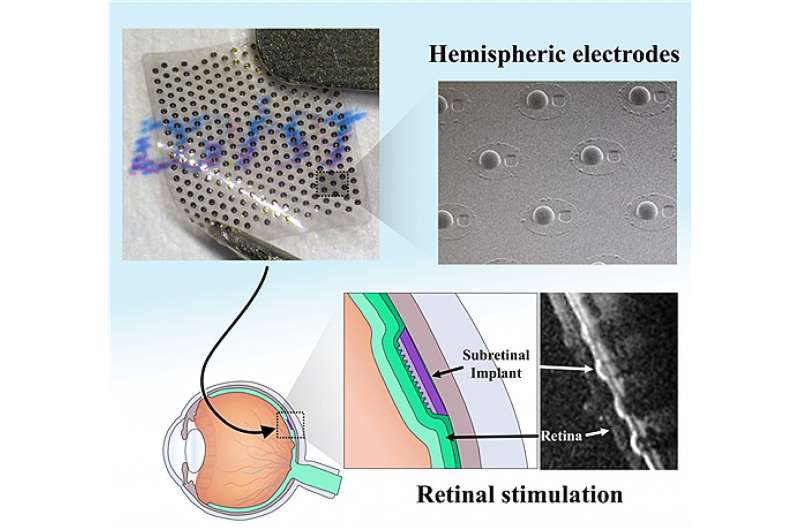This article has been reviewed according to Science X's editorial process and policies. Editors have highlighted the following attributes while ensuring the content's credibility:
fact-checked
peer-reviewed publication
proofread
Three-dimensional retinal electrodes in a convex Braille shape partially restore sight

A research team led by Professor Sohee Kim of the Department of Robotics and Mechatronics Engineering in the Daegu Gyeongbuk Institute of Science & Technology has successfully developed three-dimensional retinal electrodes that resemble convex Braille.
By stimulating the remaining normal nerve cells in the retina, the electrodes are expected to be used to partially restore vision to patients with blindness. The study's findings were published on March 24 in Advanced Materials Technologies.
One of the main causes of blindness is damage to photoreceptor cells in the retina due to diseases such as diabetic retinopathy and macular degeneration. Damage to photoreceptors, which convert light information from the eye into electrical signals, is irreversible and may cause decreased vision and even blindness.
Retinal implants are devices that restore vision by replacing damaged photoreceptors and transmitting electrical signals to normal nerve cells in the retina, enabling the signals to reach the brain along the optic nerve.
Many traditional retinal implants adopt simple two-dimensional electrodes, which encounter difficulty in adhering to cells. Furthermore, the three-dimensional electrodes several research groups have developed resemble pointed needles or have angled edges that could damage normal cells.
Professor Kim's research team has successfully developed a technology that forms three-dimensional electrodes in a convex Braille shape on thin, flexible films. The electrodes' characteristics improve retinal implants' efficiency by minimizing the distance to cells, thereby reducing the current required for stimulation and preventing unnecessary current leakage. Notably, they have a rounded shape that does not damage cells.
Professor Kim's research team used Braille-shaped retinal electrodes to stimulate the retina and induce visual responses in mice and primates. Adding to this study's significance, it was conducted in collaboration with Professor Yong-sook Goo of Chungbuk National University, who is not only one of the world's few experts experienced in primate retina research but has presented the results of the rarely reported procedure of electrical stimulation in the primate degenerative retina.
Professor Kim of the Department of Robotics and Mechatronics Engineering, DGIST said, "We have developed a technology that allows electrodes to closely adhere along the retinal curvature to ensure a wide field of view. We hope that this retinal stimulation technology will be commercialized in Korea and help many blind patients."
More information: Namju Kim et al, Double‐Sided, Thin‐Film Microelectrode Array with Hemispheric Electrodes for Subretinal Stimulation, Advanced Materials Technologies (2024). DOI: 10.1002/admt.202302155



















